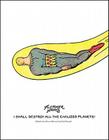So in the almost-three years of this blog, I have terribly remiss in talking about picture books. I do read them all the dang time, and love many of them; I'm trying to get better at actually
recording that I do so. Part of it, of course, is that they take so little time to read, and I generally can't generate more than a few sentences about them. From now on, though, I'm just going to periodically subject you to posts like this one, in which I post a plethora of clumsily-aligned covers and exult a bit over the charmingness of these nine stellar titles.
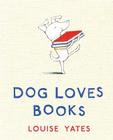 Dog Loves Books
Dog Loves Books, Louise Yates: The eponymous canine loves reading so much he opens a bookstore . . . and then fields requests for cups of tea and directions from people who don't even notice what a wonderful place they're in. Particularly precious for booksellers and librarians!
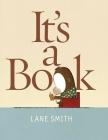 It's a Book
It's a Book, Lane Smith: Another title custom-built to be an analog-bookseller favorite, featuring a bookish ape and a donkey who just doesn't get it--"How do you scroll down?" A great Christmas gift from my little brother's awesome girlfriend! (Oh, and there's now a board book version,
It's a Little Book, which leans more towards the more basic "books are not for eating" lesson.)
 I'd Really Like to Eat a Child,
I'd Really Like to Eat a Child, Sylviane Donnio: An adorable, petulant baby alligator does not want to eat any more bananas, thank you--today a kid is on the menu! Provided he can find one. Spoiler: children turn out to be much, much bigger than baby alligators, who should probably nosh bananas until they're big and strong.
 I Want My Hat Back
I Want My Hat Back, Jon Klassen: I tell you what, I tried to handsell this book to every single person who came in looking for a picture book this past holiday season! Totally my new favorite. It's a simple tale of a bear looking for his missing red
chapeau--and kids will adore solving the mystery before the characters do! (Oh, and the ending, in which maaaaaaybe the bear eats the culprit? I don't think a kid too young to think it's hilarious will even get it, so there.)
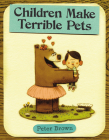 Children Make Terrible Pets
Children Make Terrible Pets, Peter Brown: I just love Brown's blocky, half-saturated illustrations for this funny book and its possibly even funnier sequel,
YOU WILL BE MY FRIEND! Both feature an enthusiastic young bear, Lucy, who (in
CMTP) finds a little boy in the woods, brings him home and names him Squeaker, over her mother's wise protestations that children aren't suited for pethood. In
YWBMF!, Lucy decides she needs more friends, and adopts the not-particularly-successful tactic of simply going up to various woodland critters and announcing their new BFFness in loud, uncertain terms.
 Gator,
Gator, Randy Cecil: A much-appreciated surprise gift from my friend Shiraz, this is the sweet, sweet story of a carousel alligator who gets lonely when fewer and fewer people come to visit the amusement park where he lives, and sets off on adventure to find friendship and happiness--predictable but poignant.
 A Penguin Story
A Penguin Story, Antoinette Portis: Edna the little penguin has only ever seen three colors--black night, white ice, blue sea--but she's sure there must be more out there! So she packs a lunch (a nice dead fish) and sets off to find another color. Great use of a minimal palette! Also check out Portis's great first book about imaginative play,
Not a Box.
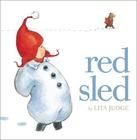 Red Sled
Red Sled, Lita Judge: An almost-wordless (but for spot-on sound effects) tale of what happens when a bunch of woodland creatures take a joyride on a little girl's sled. (And how come kids in picture books always get to live by woods full of friendly creatures? Hmpfh.)
 Stop Bugging Me: That's What Friends are For
Stop Bugging Me: That's What Friends are For, Daniel Cleary: Cleary's bare-bones illustrations are smudges and squiggles on a notebook-paper background, but they're still incredibly expressive! I loved this little story of grumpy Smudge's attempts to run a secret errand that keeps being interrupted by a coterie of friends who will not take GRUMP for an answer. (N.B. the book description claims Smudge is a dog, but he/she is
clearly a cat I had growing up. Ol' Smudge-y. That cat hated
everybody.)
 Wodehouse at last! Now I compare writers to him like crazy.
Wodehouse at last! Now I compare writers to him like crazy.










